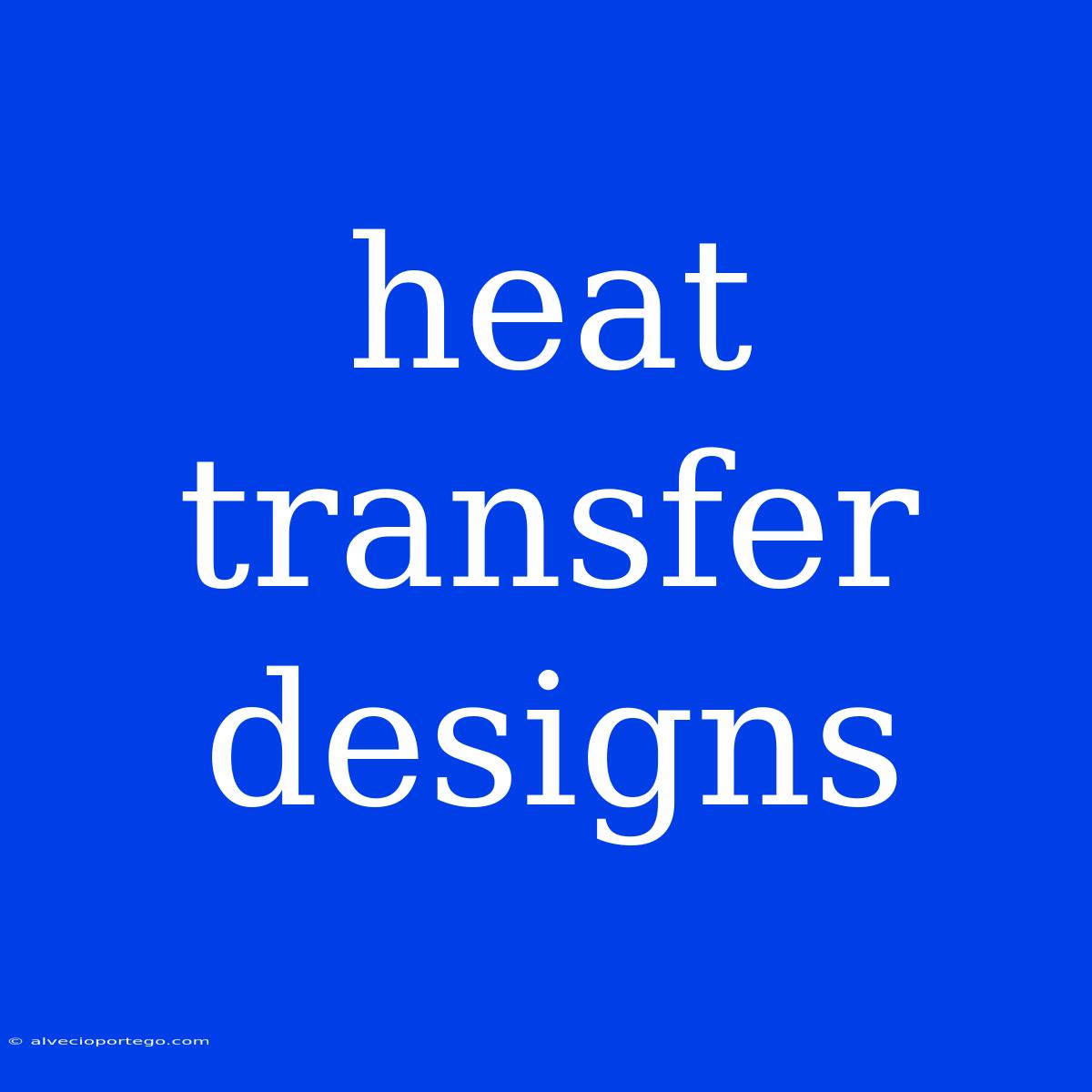Heat Transfer Designs: Optimizing Energy Efficiency
Heat transfer is a fundamental concept in engineering and plays a crucial role in various applications, from power generation to refrigeration. Efficient heat transfer designs are essential for maximizing energy efficiency and minimizing energy waste. This article explores key concepts and considerations in heat transfer designs, focusing on various applications and advancements in the field.
Understanding Heat Transfer
Heat transfer is the process of thermal energy movement from one object to another or within a system due to a temperature difference. There are three main modes of heat transfer:
- Conduction: Heat transfer through direct contact between objects or molecules at different temperatures. For example, the heat transfer from a hot pan to a frying egg.
- Convection: Heat transfer through the movement of fluids (liquids or gases). This can be natural (due to buoyancy) or forced (due to a fan or pump). For example, the heat transfer from a radiator to the surrounding air.
- Radiation: Heat transfer through electromagnetic waves, which can travel through a vacuum. For example, the heat transfer from the sun to the Earth.
Key Considerations in Heat Transfer Designs
- Surface Area: A larger surface area facilitates faster heat transfer. This is why heat exchangers often have intricate designs with fins or other extended surfaces.
- Temperature Difference: The greater the temperature difference between two objects, the faster the heat transfer. This is why heat sinks are often used to dissipate heat from electronic components.
- Thermal Conductivity: Materials with high thermal conductivity allow for efficient heat transfer. Metals like copper and aluminum are excellent conductors, while materials like wood and plastic are poor conductors.
- Fluid Flow Rate: In convective heat transfer, the flow rate of the fluid directly influences the heat transfer rate. Higher flow rates lead to faster heat transfer.
- Heat Transfer Coefficient: This parameter quantifies the efficiency of heat transfer between a surface and a fluid. A higher coefficient indicates faster heat transfer.
Applications of Heat Transfer Designs
Heat transfer designs have numerous applications across various industries, including:
Energy Generation:
- Power Plants: Heat transfer plays a vital role in generating electricity from fossil fuels or nuclear power. Efficient heat exchangers transfer heat from the combustion process to water, creating steam to drive turbines.
- Solar Energy: Solar panels absorb solar radiation and convert it into heat, which is then used to generate electricity or heat water.
Electronics Cooling:
- Computers and Smartphones: Heat sinks and fans are essential for dissipating heat from electronic components and preventing overheating.
- Data Centers: Cooling systems are crucial for maintaining optimal operating temperatures in data centers, preventing downtime due to overheating.
Refrigeration and HVAC:
- Refrigerators and Air Conditioners: Refrigerant fluids absorb heat from the inside of refrigerators or buildings and release it outside, maintaining desired temperatures.
Other Applications:
- Heat Exchangers in Chemical Processing: Heat exchangers are used to transfer heat between different processes, ensuring efficient and safe operation.
- Food Processing: Heat transfer is crucial for processes like pasteurization and sterilization, ensuring food safety.
- Medical Devices: Heat transfer designs are used in medical devices like MRI machines and lasers.
Advancements in Heat Transfer Designs
- Nanofluids: These fluids incorporate nanoparticles to enhance thermal conductivity and improve heat transfer efficiency.
- Microchannel Heat Sinks: These devices utilize micro-scale channels to increase surface area and improve heat dissipation.
- Heat Pipes: These closed systems use the evaporation and condensation of a working fluid to transfer heat efficiently over long distances.
- Computational Fluid Dynamics (CFD): CFD simulations are used to optimize heat transfer designs by modeling fluid flow and heat transfer processes.
Conclusion
Heat transfer designs are essential for optimizing energy efficiency and maintaining optimal operating temperatures in various applications. Understanding the fundamental principles of heat transfer and employing innovative designs can significantly reduce energy waste and improve system performance. Continued advancements in materials, fabrication techniques, and computational modeling will further enhance the field of heat transfer design, paving the way for more efficient and sustainable technologies.

